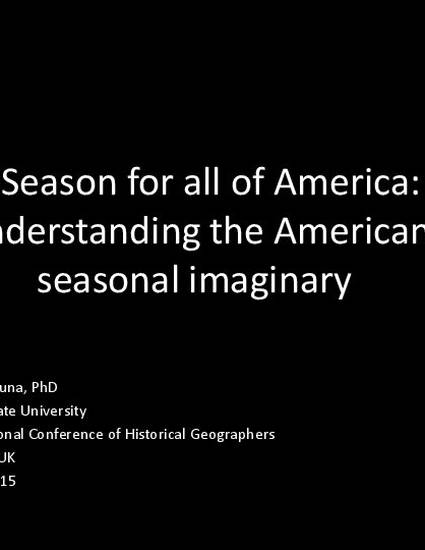
Presentation
A Season for all of America: Understanding the American seasonal imaginary
Conference of Historical Geographers
(2015)
Abstract
Since the earliest days of settlement, American references to the seasons (i.e. winter, spring, summer, fall) have invoked a remarkably consistent set of images, ideas and tropes – the notion of four seasons and specific seasonal associations (e.g., snow in winter, planting in spring, summer verdure, harvest in autumn). This is the American seasonal imaginary. This seasonal imaginary has constituted an integral part of American culture and identity. Despite wide climatic diversity in the U.S. and its seasonal experiences, Americans have clung to this climatically and geographically specific seasonal imaginary.
In this presentation I present how the American seasonal imaginary was represented and constructed in almanacs from the late 18th to late 19th centuries, with particular attention to correspondences (or lack thereof) between climate and seasonal representations. Until the early 19th century, the almanac was the most widely read publication in America. Almanac representations of seasonality were part of the development of the American seasonal imaginary. I focus on two specific questions: How was seasonality represented in early American almanacs? To what extent did these representations of seasonality reflect local geography (i.e. climate, agriculture, culture, economy)? Finally, I consider the social and environmental implications of seasonal (mis)representation.
Disciplines
Publication Date
July 16, 2015
Location
Royal Geographical Society in London, England
Citation Information
Marcos Luna. "A Season for all of America: Understanding the American seasonal imaginary" Conference of Historical Geographers (2015) Available at: http://works.bepress.com/marcos-luna/41/
